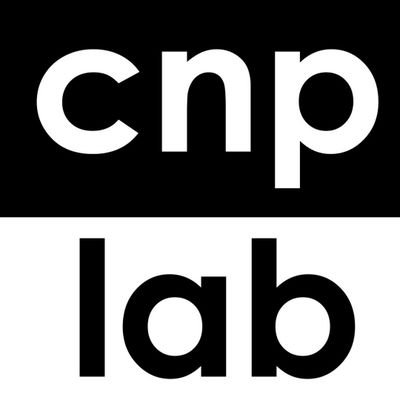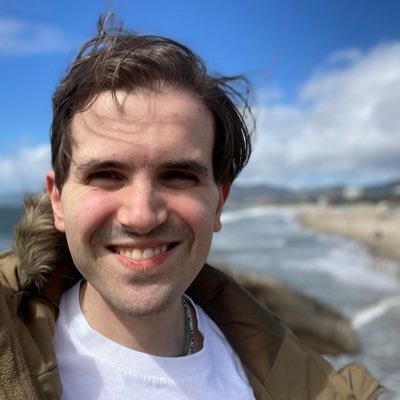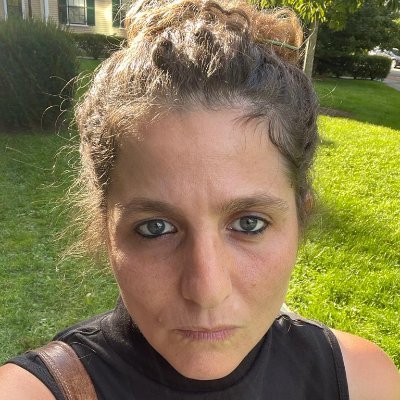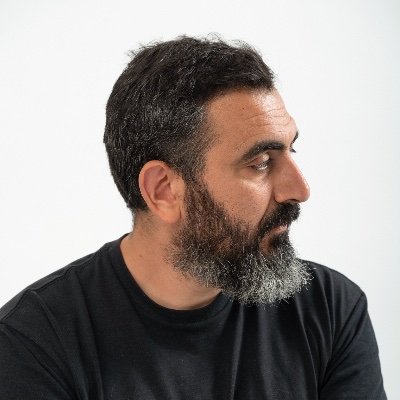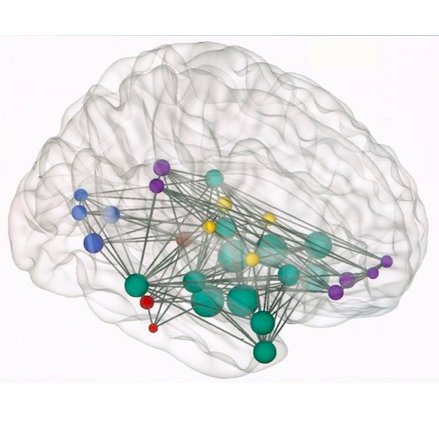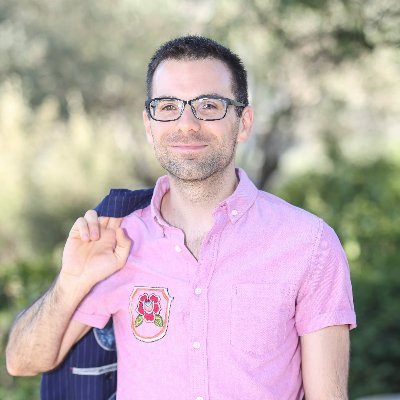
Moshe Roseman-Shalem
@MosheRoseman
Followers
90
Following
2K
Media
2
Statuses
28
Public Health Resident (Epidemiology, AI & Digital Health) @ Clalit Innovation | MD, PhD candidate | Bridging brain science, AI & healthcare
Rehovot, Israel
Joined December 2018
Exciting news from our lab! Check out our latest paper 'Processing of social closeness in the human brain', now published in @CommsBio. Congrats to @MosheRoseman, @ShaharArzy, and our amazing collaborator @RobinDunbar10!
Thrilled to share our latest publication in @CommsBio: 'Processing of social closeness in the human brain', where we show how brain processing of very close friends differs from others. Huge thanks to the legendary @RobinDunbar10 and brilliant @ShaharArzy! https://t.co/FVJpiJmZJ6
0
2
4
Thrilled to share our latest publication in @CommsBio: 'Processing of social closeness in the human brain', where we show how brain processing of very close friends differs from others. Huge thanks to the legendary @RobinDunbar10 and brilliant @ShaharArzy! https://t.co/FVJpiJmZJ6
0
0
4
📢Excited to announce our new publication in Cerebral Cortex! This fMRI study by Rotem Monsa, @Amnon_Dafni, and @ShaharArzy, delves into the neural basis of self-defining memories and highlight the role of self-reflection in them. Read more: https://t.co/ybecYihyE0
0
5
10
📣 SO EXCITED to share with you all my third first-author paper from my PhD: “Video gaming, but not reliance on GPS, is associated with spatial navigation performance.” ➡️ https://t.co/keksk4IFcU I am so grateful to the wonderful team who turned this dream into a reality! 🙌
13
26
166
We are happy to report that our latest paper, 'Evidence for grid-cell-like activity in the time domain', has just been published in Neuropsychologia! Congrats to the talented researchers Greg, @Amnon_Dafni, Rotem & @ShaharArzy. Find the paper here: https://t.co/EHORe0XiJA
0
5
6
We’ve used precision mapping to reveal side-by-side, functionally specialized regions in the cognitive cerebellum! Check out our new preprint: https://t.co/vfkkcM2u6V With @jingnandu049 @heatherlkos @pangeli95 @LaurenDiNicola Mark Eldaief @RandyLBuckner (1/7)
2
9
27
Happy to share that Cerebral Cortex just published our new paper uncovering the brain's spatial orientation system based on lesions. Congrats @MosheRoseman and Uri! Thanks to our amazing collaborators @IsaiahNeurology @neuromichael @foxmdphd @hugospiers
https://t.co/yq6WFhqMnN
academic.oup.com
Abstract. There is disagreement regarding the major components of the brain network supporting spatial cognition. To address this issue, we applied a lesio
0
7
14
How do we find our way? Lesions causing loss of ability to navigate space (topographical disorientation) are functionally connected to medial parietal/temporal & ventromedial prefrontal cortices @ShaharArzy @MosheRoseman @neuromichael @foxmdphd @HebrewU
academic.oup.com
Abstract. There is disagreement regarding the major components of the brain network supporting spatial cognition. To address this issue, we applied a lesio
1
9
33
מוזמנים להקשיב לשיחה המרתקת שהקלטתי עם ד"ר יואב חמדני המקסים והמבריק! דיברנו על היסטוריה אמריקאית- המערב הפרוע, אינדיאנים, גנרלים מפוקפקים, על התגלית סנסציונית שלו, וגם על האלבום שלו שהוקלט במנהטן והוקדש לאשדוד. ספוטיפיי- https://t.co/rJjZCeapCG "ברדיו עם קלצ'קין" @yohamdani
10
2
72
אמלק: אם אתם יכולים - תתרמו דם. ותיכנסו למאגר תורמי מח העצם. בבקשה. לרוב אני לא כותב על עניינים אישיים, אבל הפעם הרגשתי צורך כבר שלושה חודשים שהמשפחה שלנו עוברת תקופה מאוד מורכבת. אשתי, ענבר, אובחנה בתסמונת נדירה ומסוכנת - אנמיה אפלסטית.👇🏽
24
40
275
Honored to have been awarded the Presidential Scholarship for excellence and scientific innovation. I'm grateful to the President, his wife, and the scholarship committee for supporting Alzheimer's research. Thanks to my legendary mentor @ShaharArzy and all @cnplab members!
היי, כאן מיכל שמחנו להעניק את מלגות הנשיא לדוקטורנטיות ודוקטורנטים מצטיינים שעבודותיהם עוסקות בגורמים, תהליכים ומנגנונים המשפיעים על חיי הזקנים. הזוכים במלגות מקדישים שנים רבות מתוך מטרה להבין את תהליכי ההזדקנות ולמצוא פתרונות יצירתיים לאתגרים שהגיל מביא איתו.
1
1
7
We may process our closest friends and family in different parts of the brain from the rest of our social circle, perhaps because we assume they will think and feel similarly to how we do
newscientist.com
Brain scans show that different areas are active when we contemplate our five most intimate relationships compared with other friends
2
9
26
Most of our social brain is dedicated to the 5 closest people in our life. All other people are represented in relatively small cognitive mapping related regions. See our new preprint by @Mosheroseman with @rddunbar96
https://t.co/UNh8Q9zP8O
1
37
212
Super excited to share my first preprint! We used fMRI to examine levels of personal closeness, and found that the majority of our social mind is dedicated to only a few closest relationships. Thanks to my mentor @ShaharArzy and the great @RobinDunbar10
0
2
4
Our brain can process a tremendous number of members of our social network, How? Using blockbuster movies and fMRI, Ron and colleagues demonstrate that a most powerful strategy is social categorization by narrative roles. See our new paper at @JNeurosci
https://t.co/tefhWiiFVU
1
12
57
Time-cells at the ms level are well known. What about grid-cells for time? here Greg Peters-Founshtein and colleagues show a grid-cell-like activity for the representation of dual time scales (age and time-of-day) at the entorhinal cortex https://t.co/WtrV5WJ9wo.
1
15
54
Did you know there is a third somatomotor map in the human cerebellum? Excited to share our new preprint w/ @pangeli95 @LaurenDiNicola and Randy L. Buckner https://t.co/4wZyNOA0Jd
biorxiv.org
Seminal neurophysiological studies in the 1940s discovered two somatomotor maps in the cerebellum – an inverted anterior lobe map and an upright posterior lobe map. Both maps have been confirmed in...
0
11
26
Cognitive maps are well established in spatial cognition. Are they used also for social cognition? With Raphael Kaplan we argue that hippocampal–entorhinal coordinate transformations inform social perspective taking https://t.co/Z1ycF9yhbI.
1
8
29
New paper! Brain representations of real-life social networks. Joint work with @HaymanMordechai, @BarTamir5 and @ShaharArzy. Now out in @SfNJournals #JNeurosci : https://t.co/6nFg2NJWit
4
36
99
